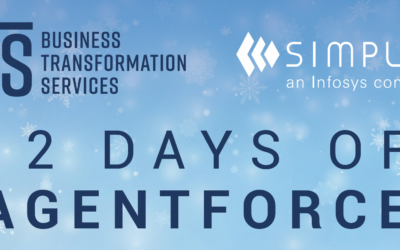Like other sectors, the insurance industry is being transformed by modern technology solutions. These platforms are helping companies work faster, more cost-effectively, and with the user-friendly features that modern customers expect. More than 50% of all insurance claims activities are expected to be replaced by advanced AI algorithms to manage claims processing by 2030, according to McKinsey industry research.
This dramatic transformation is already underway, and insurance companies that are not keeping up are falling behind. Let’s explore 3 must-know trends reshaping the industry in 2023:
The customer experience is being reimagined on multiple fronts
Modern customers want simple, self-service options whenever they’re shopping for an insurance policy, accessing insurance services, and transmitting personal information to their insurance company. Fortunately, insurance companies have access to a growing number of options for meeting these customer expectations, including:
Automated claims processing
Instead of laborious, manual processing of every claim, initial claims routing is increasingly being handled entirely by AI-powered algorithms that can get customers to resolutions faster and more accurately.
Predictive analytics
Insurance companies have traditionally been reactionary businesses, responding to events after they occur. With the aid of predictive analytics, that’s changing as modern technology helps companies to better predict customer needs and behaviors—and then mount a proactive, informed response.
Wearable technologies and IoT
Much of the personal information that insurance companies request from their customers has traditionally been manually submitted by the customer. But wearable technologies and Internet of Things (IoT) devices attached to things like cars are increasingly eliminating the need for customers to take on this responsibility. Instead, this technology is continuously gathering the necessary data—and then transmitting the data automatically to the insurance company.
Digital platforms and mobile apps
Digital platforms (ie. your website) and mobile app(s) are often a customers first impression of your brand. Whether those experiences are easy, and pain free will go a long way to securing long-lasting customer relationships. Can your customers easily search and find answers to questions, readily access and manage every aspect of their policies on the go, and more, are key factors as you assess and look to optimize the customer experience you are providing.
Technology will help companies achieve new operational efficiencies
Insurance companies are battling increasingly fierce headwinds as 2023 gets underway. Global inflation is raising the cost of all goods and services, including insurance. And climate change is triggering more frequent and severe extreme weather events that are triggering costly payouts. These forces are putting insurance services increasingly out of reach for many consumers—and stretching insurance services for customers to a breaking point. Consequently, insurance companies need to find operational efficiencies wherever they can, think digital distribution, automation/AI/ML, as well as cloud solutions.
By moving to all-digital distribution of insurance services insurers stand to eliminate the need for clunky, paper-dependent processes. Likewise investments in automation, AI, and machine learning can help insurers improve the quality and speed at which they respond to customers, detect fraud, improve customer segmentation, and optimize pricing and underwriting models. Finally, by taking advantage of cloud-based technology solutions insurers have additional flexibility to scale operations rapidly, maintain data security and streamline the customer experience.
Low code and no code will streamline building business ecosystems
As much as insurance companies may want to prioritize digital transformation, it can only move as fast as the expert developers and system admins who are building out and maintaining technology infrastructure. Traditionally, these teams have had no other choice but to do custom coding work, essentially reinventing the wheel every time and never taking advantage of best-practices configurations and battle-tested code to create personalized and interactive customer experiences. But this bottleneck with DevOps teams is increasingly dissipating as a result of insurance companies being able to invest in low-code and no-code technology.
These solutions ease the burden on DevOps teams by enabling business teams that need specific apps, IoT integration, and other features to build all of these capabilities themselves. Low-code and no-code platforms are available to improve underwriting processes and compliance processes, build customer-friendly digital channels for interactions, and streamline claims processing. Low-code and no-code platforms also are enabling insurance companies to rapidly build and scale new services that respond to market conditions, regulations, customer needs and opportunities, and emerging risks. You can learn more about Low Code/No Code development utilizing Salesforce’s Digital process automation (DPA) in our financial services point of view, Digital Process Automation for Claims and Underwriting.
For insurance companies, the opportunity to innovate is now. Companies have access to technology solutions that make it easy and cost-effective to digitally transform their operations and better serve customers. Going into 2023, insurance companies have multiple, powerful off-the-shelf options for reimagining their customer experience, achieving new operational efficiencies, and streamlining the buildout and maintenance of their business ecosystem with low-code and no-code technology.
Simplus specializes in helping insurance companies stay on the leading edge of digital transformation. To learn more about how Simplus ensures insurance companies get the most out of their technology investments, please reach out to us today. We look forward to helping you get from where you are today, to where you want—and need—to be.















0 Comments